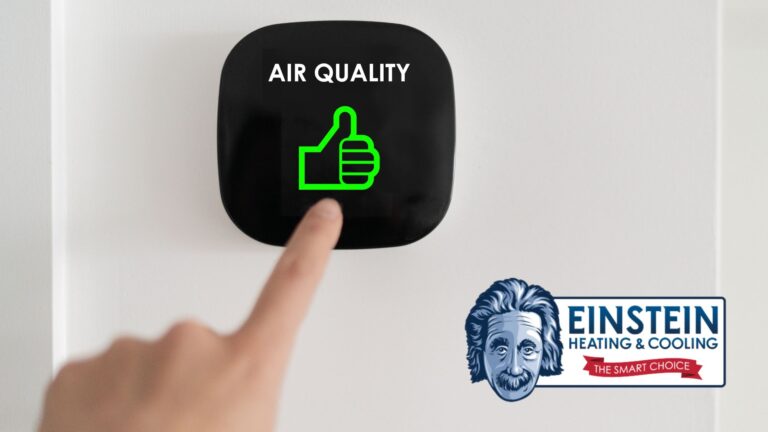Indoor air quality (IAQ) is an important aspect of our daily lives that often goes overlooked. We spend a significant amount of our time indoors, whether it’s in our homes, schools, workplaces, or other indoor environments. The quality of the air we breathe indoors can have a significant impact on our health and wellbeing. In this blog, we will explore the basics of indoor air quality and its importance, as well as some common indoor air pollutants and how to improve IAQ.
What is Indoor Air Quality?
Indoor air quality refers to the quality of the air inside buildings and structures as it relates to the health and comfort of the building occupants. Poor indoor air quality can lead to a range of health problems, including allergies, respiratory problems, headaches, and other health issues. It can also impact the comfort and productivity of building occupants, as well as the energy efficiency of the building.
Common Indoor Air Pollutants
There are several common indoor air pollutants that can impact the quality of the air we breathe indoors. Some of the most common indoor air pollutants include:
1. Particulate Matter: Particulate matter refers to tiny particles that can be inhaled, including dust, pollen, mold spores, and pet dander. These particles can cause respiratory problems and allergies.
2. Volatile Organic Compounds (VOCs): VOCs are organic chemicals that can be found in a variety of products, including paints, solvents, cleaning products, and air fresheners. These chemicals can cause eye, nose, and throat irritation, as well as headaches and nausea.
3. Carbon Monoxide: Carbon monoxide is a colorless and odorless gas that can be produced by gas stoves, furnaces, and other appliances. It can cause headaches, dizziness, and in severe cases, death.
4. Radon: Radon is a naturally occurring radioactive gas that can enter buildings through cracks and other openings. It is the second leading cause of lung cancer in the United States.
5. Biological Pollutants: Biological pollutants include mold, bacteria, and viruses, which can cause respiratory infections and other health problems.
Improving Indoor Air Quality
Improving indoor air quality is crucial for promoting the health and wellbeing of building occupants. There are several steps that can be taken to improve IAQ, including:
1. Proper Cleaning: Regular cleaning can help remove particulate matter, dust, and other pollutants from the air. It is important to use low-toxicity cleaning products to avoid introducing more pollutants into the air.
2. Ventilation: Proper ventilation can help bring in fresh air from outside and remove stale air from inside. This can be achieved through natural ventilation or through mechanical ventilation systems, such as HVAC systems.
3. Air Purification: Air purification systems can help remove pollutants from the air, including particulate matter, VOCs, and biological pollutants.
4. HVAC System Maintenance: Regular maintenance of HVAC systems can help ensure that they are functioning properly and not releasing pollutants into the air.
5. Avoiding Indoor Air Pollutants: Avoiding smoking indoors and using low-toxicity cleaning and personal care products can help reduce the amount of pollutants in the air.
6. Air Quality Sensors: Air quality sensors can monitor levels of particulate matter, VOCs, and other pollutants in the air. They can be integrated into HVAC systems or used as standalone devices. These sensors can provide real-time information about the air quality, allowing building managers to make adjustments to the ventilation or air purification systems as needed.
7. Indoor Air Quality Testing: Professional IAQ testing can provide a more comprehensive assessment of indoor air quality, including testing for radon, mold, and other pollutants. These tests can provide detailed information about the levels of different pollutants in the air, as well as identify any potential sources of pollutants in the building.
8. Visual Inspection: Visual inspections of the building and HVAC system can help identify potential sources of indoor air pollutants, such as mold or water damage. These inspections can also identify any potential issues with the HVAC system, such as leaks or improperly installed ventilation systems.
Conclusion
Indoor air quality is an important aspect of our daily lives that can impact our health, comfort, and productivity. Poor indoor air quality can lead to a range of health problems, including respiratory problems, allergies, headaches, and other health issues. However, there are several steps that can be taken to improve indoor air quality, including proper cleaning, ventilation, air purification, HVAC system maintenance from Einstein Heating and Cooling, and avoiding indoor air pollutants. Regular monitoring of indoor air quality is also important for identifying potential problems and ensuring that building occupants are not exposed to harmful levels of indoor air pollutants. By taking these steps, we can promote better indoor air quality and improve our overall health and wellbeing.








